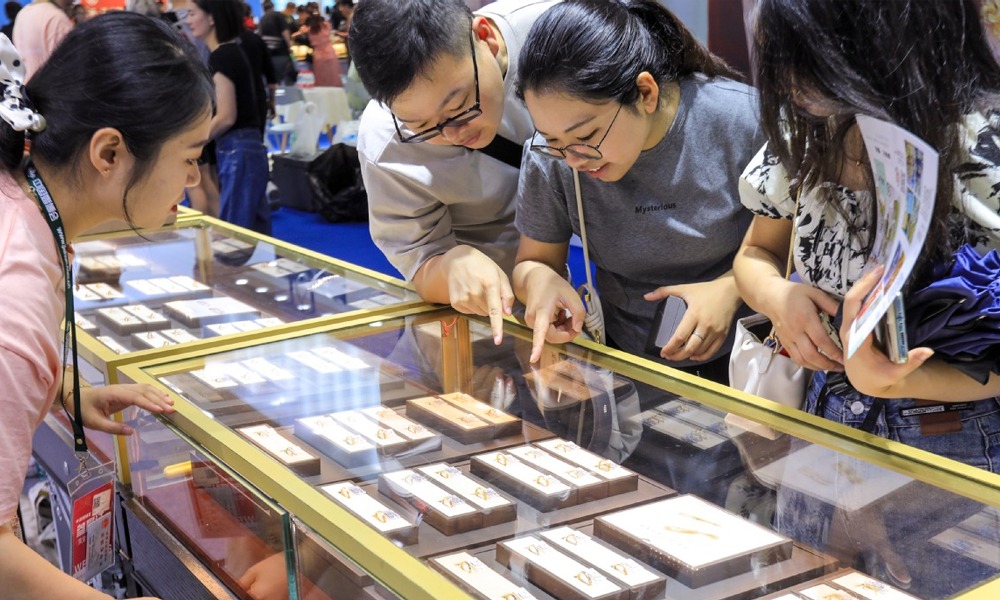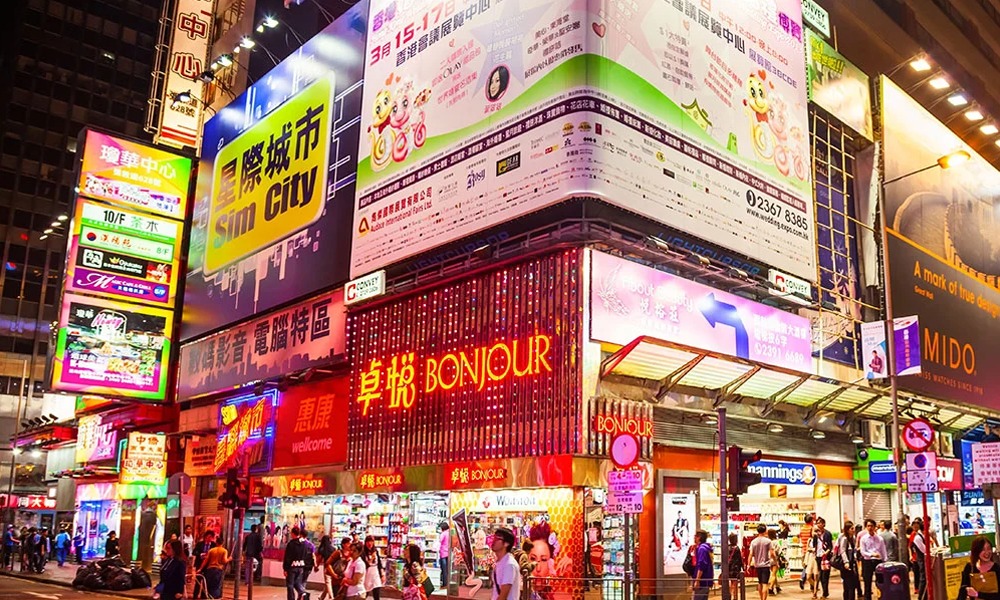International News
Tonnage demand in China for gold jewellery stays tepid, consumer spending on gold jewellery was robust:WGC

In the first two months of 2025, during the Chinese New Year festive season, gold bars, coins and ETFs saw an uptick in demand driven by several factors – such as gold’s global stability as an investment asset & China’s sluggish economic growth coupled with the Yuan’s volatility. While gold jewellery demand also showed some improvement, it remained weak when measured in tonnage.
During the lunar new year period, jewellery stores anticipated higher consumer interest as compared to previous months, according to the World Gold Council.
About 125 tonnes of gold was withdrawn from the Shanghai Gold Exchange (SGE) in January 2025. This represents a 3% rise month-on-month but well below the same period in the previous years, highlighting the soaring gold price’s negative impact on the tonnage of gold jewellery demand.

“Elevated gold prices pushed consumers more towards lightweight pieces. While tonnage demand for gold jewellery may have stayed tepid, consumer spending on gold jewellery was robust,” Roland Wang, China CEO, World Gold Council said. In China, weddings play a notable role in gold sales. However, this year may see the lowest number of marriages take place in China in 10 years and that could negatively affect gold jewellery consumption. “Mass-appeal jewellery products with lower labour charges but finer craftsmanship will continue to attract consumers,” says Wang.
So far, Chinese consumer behaviour towards gold in 2025 mirrors 2024 trends. Up until November 2024, gold reigned as the best-performing investment asset in China, with its RMB (Yuan) value appreciating nearly 28%. Gold thus drew more investors and less jewellery buyers last year. Gold bar and coin investment in the first three quarters of 2024 reached its highest level in 11 years. In contrast, demand for gold jewellery dropped to its lowest level in 14 years.
However, last year total gold consumption in China fell 10% year-on-year. As weak demand was anticipated due to slow economic growth, China imported 14% less gold in 2024 as compared to 2025, and 16% below the pre-Covid five-year average.
To uplift China’s economic condition in 2025, the Chinese government has made consumer spending its topmost priority.In a parliamentary session in Beijing, earlier this month, Chinese Premier Li Qiang promised to vigorously boost domestic consumption as the country set a 5% growth target.
This year, China has raised its budget deficit to 5.66 trillion Yuan ($780 billion) or around 4% of gross domestic product, the highest level in almost 3 decades, according to various news agency reports.
The International Monetary Fund (IMF) and Bloomberg’s median forecast China’s GDP to grow at 4.5% in 2025, year-on-year; economic growth in China, according to the World Gold Council, will be the biggest driver for gold investments and consumption of jewellery.
As an investment asset, bar and coin sales could continue gaining momentum and any gold price adjustment could be considered a good opportunity to enter for investors in 2025.As China looks to navigate through its slow economic growth, it is exploring increased investments in assets that offer stable yields.
A new programme launched earlier in February by the National Financial Regulatory Administration of China allows the country’s insurers to invest 1% of their assets in bullion. Ten insurance firms in China including China Life Insurance Co. will be able to invest their assets in precious metals like physical gold. China is the world’s second largest insurance market, and this pilot project could unlock up to $27.4 billion in investment

International News
Hong Kong luxury jewellery, watches sales slip in May

In May 2025, Hong Kong witnessed a nuanced retail landscape: while total retail sales rebounded modestly, rising 2.4% year on year to HKD 31.32 billion ($3.99 billion), sales of luxury goods—specifically jewelry, watches, clocks, and other valuable gifts—contracted by 3.2% to HKD 3.87 billion ($493.1 million). This divergence offers critical insights into the shifting dynamics of consumer behavior, external macroeconomic pressures, and sector-specific challenges.
Several interrelated factors contributed to the luxury segment’s decline. First, surging gold prices significantly dampened consumer appetite for jewelry purchases, as higher costs discouraged discretionary spending on big-ticket items. Second, demand for luxury products on the Chinese mainland softened, reducing the influx of high-spending tourists traditionally pivotal to Hong Kong’s retail sector. Lastly, increased outbound tourism encouraged local consumers to shop abroad, further eroding domestic sales.
From January to May 2025, hard-luxury sales dropped by 9% to HKD 20.27 billion ($2.58 billion), while overall retail sales fell 4% to HKD 155.05 billion ($19.75 billion). These figures highlight a broader recalibration within Hong Kong’s retail environment, reflecting evolving consumer preferences and economic headwinds.
International News
US luxury jewellery spending in May 2025 sees increase of 10.1% y-o-y

Luxury jewelry spending in May saw a significant increase of 10.1% year-over-year, according to data from Citigroup. This figure stands in stark contrast to the U.S. Department of Commerce’s estimate of only 2.9% for the same period.Citigroup’s analysis is based on the spending habits of over 10 million U.S. credit card holders. In comparison, the Department of Commerce uses its own estimates, later revising them with actual transaction data.
Luxury watch spending also showed a substantial rise, with Citi reporting a 14.7% increase, while the Department of Commerce reported a more modest 2.4% rise.
Overall luxury goods spending, though still weak, showed signs of recovery in May, declining by 1.7% year-over-year. This is an improvement from April’s 6.8% decline and March’s 8.5% decline.
Since September 2024, luxury jewelry has consistently outperformed other luxury segments, including handbags and apparel. In May 2025, jewelry was the only category to experience growth in both average spend per customer and the number of individual customers. This suggests a growing consumer preference for jewelry over other luxury items like handbags.
International News
Gold upside capped by better-than-expected Employment Report AUGMONT BULLION REPORT

- Strong US labour market data which indicated that businesses added more jobs than anticipated in June and that the unemployment rate unexpectedly fell to 4.1% served as a lid on gold’s gains and strengthened the case for the Federal Reserve to keep interest rates unchanged.
- It is anticipated that President Donald Trump’s big package of tax and spending cuts, which was adopted by the House on Thursday, will increase the national debt by nearly $3 trillion over the next ten years.
- In contrast, Trump announced that he will start writing to nations on Friday, outlining the tariff rates they will be subject to on US imports. This is a significant change from his previous promises to negotiate individual agreements.
Technical Triggers
- Gold is expected to trade in the range of $3300 (~Rs 96000) and $3400 (~Rs 98500) this week.
- Silver has given a breakout of its range, trading above $37 (~ Rs 108,000). Now next target is $38 (~Rs 111,000)
| Metal | Region | Support Level | Resistance Level |
|---|---|---|---|
| Gold | International | $3250/oz | $3440/oz |
| Indian | ₹95,000/10 gm | ₹98,500/10 gm | |
| Silver | International | $35.5/oz | $37/oz |
| Indian | ₹1,04,500/kg | ₹1,07,500/kg |
-

 National News2 months ago
National News2 months agoEmmadi Silver Jewellery Launches First Karnataka Store with Grand Opening in Bengaluru’s Malleshwaram
-

 BrandBuzz3 months ago
BrandBuzz3 months agoMia by Tanishq Unveils ‘Fiora’ Collection This Akshaya Tritiya: A Celebration of Nature’s Blossoms and New Beginnings
-

 GlamBuzz2 months ago
GlamBuzz2 months agoGokulam Signature Jewels Debuts in Hyderabad with Glamorous Launch at KPHB
-

 DiamondBuzz2 months ago
DiamondBuzz2 months agoDe Beers CEO: confident the US will exempt diamonds from reciprocal tariffs











